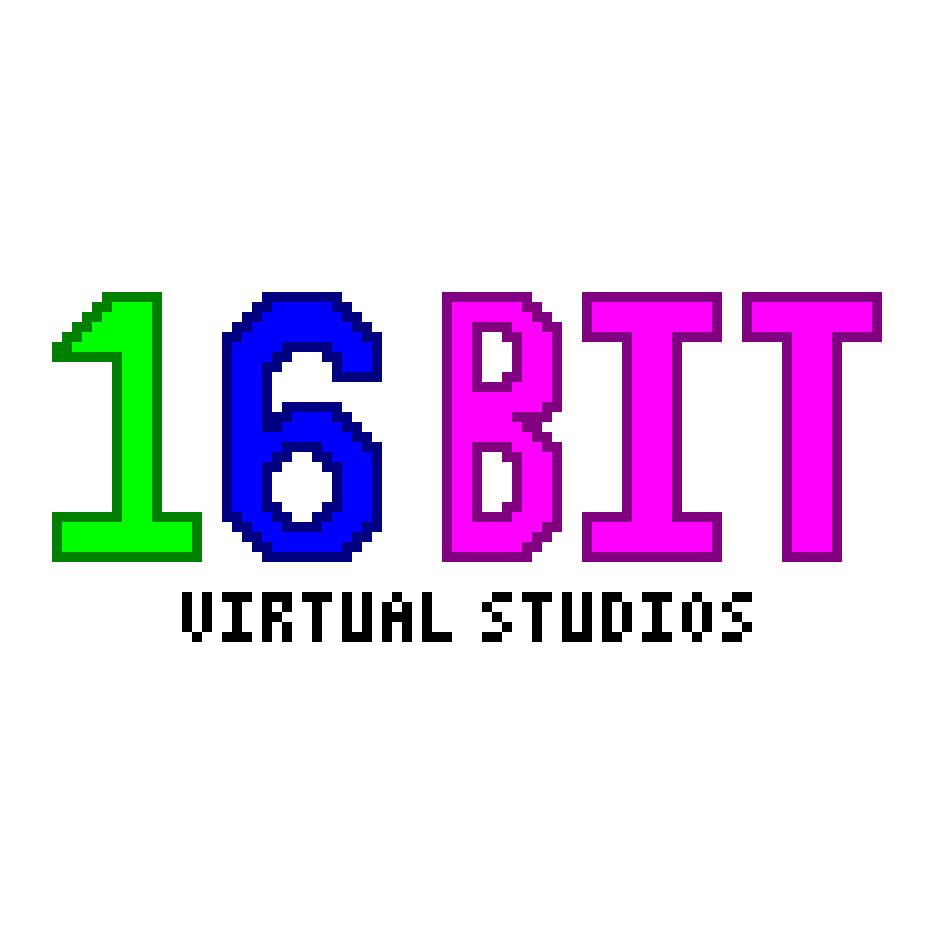Afternoon all.
I’m looking to make the switch away from Windows, and I wondered if people had any advice, distro suggestions and so on.
My main use cases for my PC are Gaming, Writing and Image editing. Things I’d love to have working are all my games, Epic, Steam, GoG and Game pass. I already use OpenOffice so I’m probably fine with that. And I currently use Photoshop, so a good alternative for that would be good. Finally Spotify, Discord and VPNs etc
Any and all help and suggestions would be welcomed, thanks in advance.
- Opensuse, or Fedora/Bazzite.
- Steam for steam, Heroic for the Rest.
- Gimp/Krita
- Spotify, discord, etc is just a Web app, but I recommend Freetube
- Mullvad as VPN.
- ALWAYS backup your data
If you want to have a distro tailored for gaming, Bazzite is a popular choice. I would recommend that if you want better driver compatibility. Another good all-round pption is Fedora. I personally use Workstation as I prefer GNOME more, but if you don’t like GNOME, the KDE version is also there.
One thing is that I’m pretty sure OpenOffice isn’t maintained anymore, so you might want to switch to LibreOffice, a fork of OpenOffice. I also like OnlyOffice as it has better compatibility with MS office files and has all three apps bundled into one. LibreOffice is still good though, and is community-maintained as well. A nice alternative for Photoshop would be GIMP. If you use Illustrator, I personally use Inkscape and it’s been great.
As usual: begin with Linux Mint (Cinnamon), that’s the best beginner distro.
Steam is natively supported. Gog and Epic are easy using Heroic Games Launcher. GamePass is impossible.
If you need Photoshop, you can run it through wine, at least the old CS6 version runs fine. I think I once had CC 2014 and it worked well, too.
Spotify and Discord work well. As for VPNs, you’d have to be more specific.
Step 1) Find a Distro which you are comfortable with using. Over the years I’ve tried Fedora, Ubuntu, Debian, and Arch, and I’ve settled on Linux Mint since it’s familiar to me, but also easy to use and lots of forums with trouble shooting since it’s based on Ubuntu/Debian. Arch is my close second if you want the bleeding edge and are OK with stability.
Step 2) Find the right UI. Most distro’s default desktop environments are good, but I found Cinnamon and KDE Plasma to be perfect for me. If you are looking for a more Mac like experience Gnome is a good starting point too. Though you can customize any distro to look like any OS with enough time and effort.
Step 3) Software.
Games is a solved problem these days. Steam works natively and Proton is good enough for lie 99% of your games. You just need to enable it and you will be good to go. If you are playing non steam games, Heroic is a simple application which works, though if you are installing anything more complicated, i.e. a CD game Lutris is your friend. Not sure about gamepass as the Microsoft store is Windows exclusive.
Office Software: LibreOffice is installed by default on all OS’s and is based off of OpenOffice, but it’s actually still in development.
Photoshop: Yeah this is going to be your make or break it situation. Photoshop has no real substitute in linux. GIMP isn’t bad, but is only good for image manipulation not creation. Kirta is more of an art studio rather than Photoshop. What I personally do is a lot of work. Affinity Photo is a close second place for Photoshop but it’s Mac/Windows only. Good News, with Proton you can run it. Bad News it’s a pain in the rear to do so. I strongly suggest Bottles and the ElementalWarrior build of Wine to get it working there are some guides on how to do it. But again it’s a pain in the rear.
In some regards how I get around Windows Limitation is just have a virtual machine with windows on it to run when I need it. Doesn’t need much power and I use it when I need it. I…e backing up my iPhone or sending music files to it.
- don’t worry about it too much. The only cost of switching again is time if you find that you don’t like one in practice
Yup, my tower still has my Windows 10 drive in it. If I need it it’s there, but for the most part I don’t need it.
So from my personal experience I have a few pointer
Don’t dualboot because you’ll keep switching to windows instead of finding solutions to your issues that you inevitably will encounter
There is no replacement to Photoshop but you can do mostly all things with Gimp. It is just different and you’ll need to figure out how. This in itself can be very frustrating because you know how to do a thing in Photoshop but will need to learn it again in Gimp. This is part of it though and imo worth the time. Just like when you learned Photoshop
You may need to use the terminal a few times when you start but in the long run when things are setup you rarely need it unless you really want to mess with things under the hood. For me, I haven’t used the terminal for well over a year
I switched to Mint 2 years ago
Be patient and use the forums or discord servers. And also be thankful and kind to people offering their help for free. Try to find a solution first, and if that does not work, give them as much information as possible when asking for a question. In Linux, find system info and export the system information as a txt file. Share that whenever you ask questions
I ended up sticking my windows NVMe in an external enclosure so I can still boot from it, if needed. You just have to change a couple registry keys first, so it loads the USB driver earlier in boot to allow it to boot off of an external drive.
I can even boot the drive as a VM using QEMU for something quick. You just had to be careful, you don’t accidentally mount the drive at the same time QEMU is using it.
There’s an extension for GIMP that makes it look and feel more like PS. Might make the transition easier.
Changing the shortcuts to copy the ones from Photoshop was the main thing that worked for me!
Dualboot is also much more complicated. No newbie should have to deal with that, imo.
I ended up sticking my windows NVMe in an external enclosure so I can still boot from it, if needed. You just have to change a couple registry keys first, so it loads the USB driver earlier in boot to allow it to boot off of an external drive.
I can even boot the drive as a VM using QEMU for something quick. You just had to be careful, you don’t accidentally mount the drive at the same time QEMU is using it.
I ended up sticking my windows NVMe in an external enclosure so I can still boot from it, if needed. You just have to change a couple registry keys first, so it loads the USB driver earlier in boot to allow it to boot off of an external drive.
I can even boot the drive as a VM using QEMU for something quick. You just had to be careful, you don’t accidentally mount the drive at the same time QEMU is using it.
I ended up sticking my windows NVMe in an external enclosure so I can still boot from it, if needed. You just have to change a couple registry keys first, so it loads the USB driver earlier in boot to allow it to boot off of an external drive.
I can even boot the drive as a VM using QEMU for something quick. You just had to be careful, you don’t accidentally mount the drive at the same time QEMU is using it.
For best out of the box experience you may want to try Bazzite (https://bazzite.gg/), it will have pretty much everything included for gaming, except Microsoft Store as noted above. This system is harder to break by doing something stupid and has good documentation on their website.
Alternatively you may try a more traditional “batteries included” distribution like Ultramarine Linux or Linux Mint.
OpenOffice has more or less been dead for a while. Check out LibreOffice, its spiritual successor, or OnlyOffice (which people have opinions about because it’s Russian developed [I think the guy is actually Latvian]).
Also, my vote is for Bazzite. Gaming based and works out of the box with constant updates as long as you restart your computer with easy rollback if something goes wrong. Hard to break your computer, but if you like tinkering it’ll have to be containerized.
Desktop is an important choice for look and feel so check out the difference between GNOME and KDE the two main variants.
Some things in my mind:
- Use an easy to use distro with the software you want it to run (the software that sometimes isn’t in your distro repositories and you may need to take some more advanced steps to use) and good documentation, ubuntu based distros like mint or arch based distros like cachyos (in my opinion, cachyos is the new best distro for beginners, as it has the best software library, configs, documentation (their specific documentation on the website together with the arch wiki) and gaming packages)
- For your desktop environment, choose on what you are accostumed to and on what you want to do with it, Gnome is very polished and has good touch features that are missing in every other DE, KDE is very desktop centric and can be tuned (should be tuned sometimes, like with numlock when starting the pc), etc
- For games, steam, heroic game launcher and lutris are very good suggestions, each has its use case. A local wine prefix with all the windows configs (vcredist and .net runtimes) and dxvk, and vkd3d-proton, are good to have, sometimes you want to play some games that aren’t on the official stores. Always check protondb for compatibility and solutions
- For photoshop, you can pirate it (there are some github repos and youtube videos showing how to do it, but it has some bugs), or you can replace it, like with photogimp (interface changes, extra filters, etc) for gimp, krita, blender, etc, for video editing, there’s davinci resolve, the free version, the paid version and the pirated version
- Always use libreoffice, not openoffice
You can turn numlock on by default!? Brb looking for the setting. That’s so annoying.
At the keyboard section, “turn on numlock on startup” (something like this, I use in the portuguese language)
Amazing! I see it. Thank you very much! I will appreciate your help every time I boot up.
Hahaha.
If you don’t know about this, it’s interesting too, if you go to the “authentication screen (SDDM)”, you can set your configs to your login screen too, like themes, icon themes, this keyboard config.
Nice, thank you.
Chiming in to emphasize that the biggest deal to you probably will be the desktop environment, not the underlying distro. Given your stated requirements, most distros could work.
Another vote for Bazzite, or really any of the Universal Blue images. There is no other distro out that is as full-featured and bulletproof for Linux newbies. Since gaming is important to you, Bazzite is almost certainly the best choice. It comes in both Gnome and KDE flavors. KDE will feel more familiar coming from Windows.
I use gnome personally but KDE has a couple really important features for a gamer. Good support for fractional scaling and software control of monitor brightness.
Start with
OR
For all your gaming needs, there’s a Steam app you can download from whatever app store or flathub, or download/install directly.
I went from Windows to Mint Cinnamon, to PopOS, to PopOS Cosmic Alpha for the last year on both my laptop and desktop. PopOS and PopOS Cosmic Alpha have been great, minimal issues for me on Cosmic with gaming but there were a few hiccups or delays with newly launched games, more so an issue with Nvidia drivers than the OS. For example I had to wait a month or two after Starfield launched because there were bugs with the Nvidia drivers.
Protondb is a great resource both for checking if a game runs well on Linux, and also checking troubleshooting steps if you do run into an issue, there might be some advice on what worked for other people to get a specific game running.
Also avoid Razer or Corsair gaming mice or do your research on the specific model before buying unless you want headaches with not being able to edit the RGB settings. Best if you still have access to a windows machine if you want to own anything Corsair (or are fine with not being able to edit RGB settings). I have a Logitech G502X without RGB because of all the headaches I was having with my last few Razer and Corsair mice.
Edit: OpenRGB is another resource if you have an RGB device and need to change some settings, there’s a list of supported devices on the website.
Game Pass doesn’t work on Linux. It could very easily, but M$ doesn’t want it to.
Everything else should be good to go.
Since a few weeks ago some Gamepass games are supposed to work via the battle.net launcher. Don’t know what the current status there is.
Things for you to decide:
Which desktop environment do you want (KDE, Gnome, Cinnamon, cosmic, etc)
Do you want it to be super up to date all the time? Or are you OK with slower updates for a more stable system?
Difficulty: How hard do you want things to be? Do you want things to be set up and lots of solutions online? Or are you willing to dive deep, do stuff yourself and figure stuff out?
I started with OpenSUSE Tumbleweed and loved it. Highly recommended. I didn’t know about TuxedoOS at the time and that seems like a good place to start too. Noe I know more and am on CachyOS and am super happy with it.
Something that can make the switch easier is that, like with OpenOffice, many alternatives can be used before you switch as they’re cross platform :)
So if you need a replacement for Photoshop, you can start learning it before you’re also simultaneously learning linux. Gimp has a modified version to make it more like Photoshop I know many folks like, that might be worth exploring
The other alternative would likely be krita, which is generally better regarded for its comparative competency as a project, but is more aimed at illustration than photo editing, so it may not be able to meet your needs
Discord works cross platform, I think most VPNs do too, but I could be mistaken
On the distro front, my votes go to mint and fedora. That gives you a wide range of desktops to choose from, try them out by booting from a flash drive and pick what you like. Most distro stuff is about living with the os long term, but the desktop will immediately feel alien or like home. And maybe you like alien! That can be fun, but it really depends on you.
Fedora comes with some asterisks like not making non-free software available by default, including things like drivers and media codecs. That can be a pain to deal with as a new user. And the community isn’t super newbie focused. Mint is great, but doesn’t offer either of the biggest desktop environments that you might wanna use, and I have less personal experience with it.
Open suse also has an exceptional reputation, but I’m less familiar with it. Pop os many folks like, but my experience with it has unfortunately always been kinda buggy and rough around the edges, your milage may vary.
you game pass/microsoft store games are probably fucked, but steam, epic, and gog all should work on linux just fine (except maybe those that need anticheat)
for steam just use the official client, and you can play epic and gog through the Heroic launcher which is actually significantly nicer than epic games launcher or whatever
the distro doesn’t matter really, just use mint or something
You’d recommend Heroic launcher over Lutris? Epic didn’t install via Lutris for me, but I haven’t got around to looking into it.
I’ve used both, and I’ve found that Heroic is much easier and generally works out of the box. At this point, I only use Lutris for things that need extremely fine-grained control.
I use heroic because it uses an epic games store emulator instead of actually using the epic games store, and so it’s way faster and nicer than the shitty official binary running under wine or whatever (which is what lutris does)













